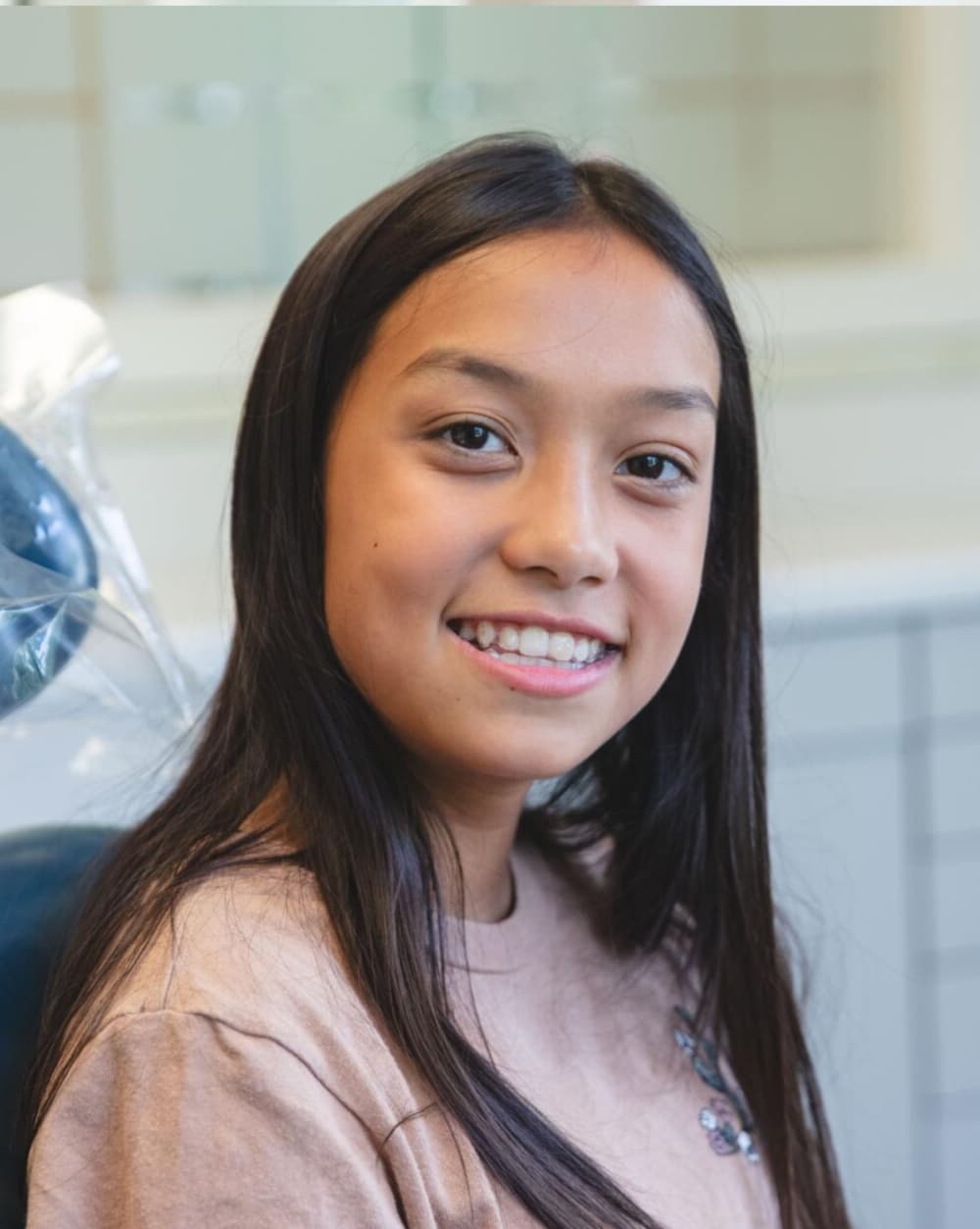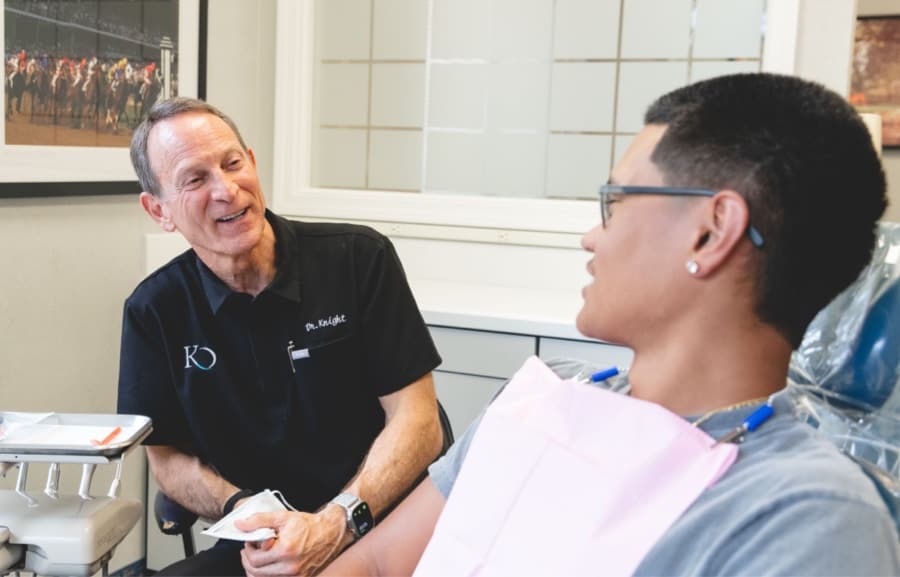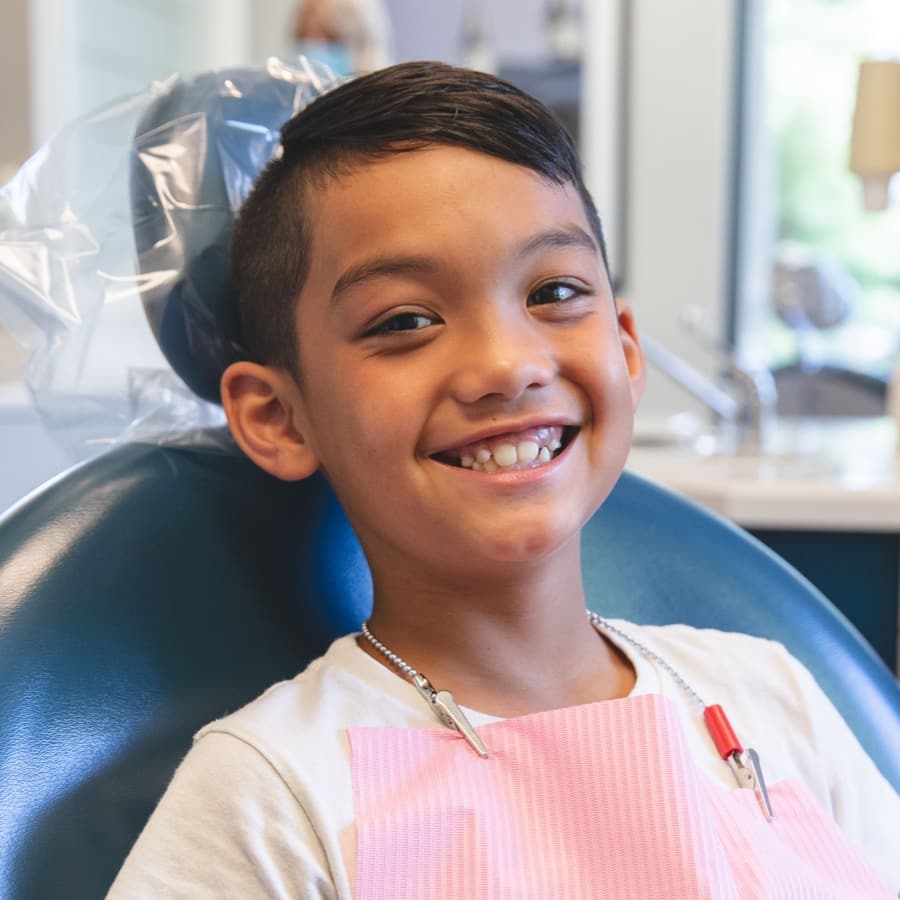
Airway-Focused Orthodontic Treatment
Breathe Right With Dr. Knight
You may not have heard, but orthodontics can enhance your overall wellness by helping you breathe better and improve your sleep.
When you require more than traditional orthodontic interventions to get a truly life-changing, holistically healthy smile, Knight Orthodontics is the practice to see.
Specializing in sleep apnea therapy, TMJ treatments, snoring prevention, and orthognathic surgery, Dr. Knight uses his expertise in correcting airway obstruction and jaw alignment to customize a treatment plan to help you smile, breathe, and live better.
Learn MoreSmiles That Speak Volumes
At Knight Orthodontics, smiles are gifts that keep on giving. Even after you finish treatment, your benefits will last a lifetime.



Life-Changing Smiles
At Knight Orthodontics, smiles are gifts that keep on giving. Even after you finish treatment, your benefits will last a lifetime.
Learn More
Fun & Family Friendly
Just because we’re a clinic doesn’t mean we’re clinical. Come visit us and you’ll see that we’re all smiles!
Learn More
Orthodontics for All Ages
Our team can make your whole family smile — regardless of how many times they’ve been around the sun!
Learn MoreSee Your Smile in Every Dimension
Anatomage brings your orthodontic treatment to life with 3D imaging so we can fine-tune every detail for your best outcome.
Learn More
Your Louisville & Radcliff Orthodontist
Dr. L. Douglas Knight
Kentucky native Dr. Doug Knight loves practicing quality orthodontics in both Louisville and Radcliff while maintaining a busy teaching schedule.
He gets a lot of satisfaction out of making a difference — not just by caring for his patients here at home in Kentucky, but also by sharing his expertise with other orthodontists and their patients from all over the world.
Learn More Buy My BookSmiles for Your Whole Family
At Knight Orthodontics, we offer treatment options for patients of all ages — because each patient is unique and deserves a new smile, no matter how young or old they are!

Early prevention for children with orthodontic problems can provide a healthy smile without being invasive.
Colorful Braces + Invisalign for Kids + Buteyko Breathing Therapy +
Our convenient treatment options not only give your teen a healthy smile but also help them look good and feel confident.
Invisalign Teen + Clear Braces + Colorful Braces + Orthognathic Surgery + TMD Treatment + Buteyko Breathing Therapy +
It’s never too late to get the healthy, beautiful smile you deserve with treatments that fit your lifestyle.
Invisalign + Clear Braces + Metal Braces + TMD Treatment + Sleep Apnea +Delightful & Supportive
Dr. Knight and his wonderful staff have been part of our family for 16 years. We have seven children and they have taken care of six of them. Dr. Knight is always delightful and supportive. He wants the best outcome for not just his patient but the family. As a patient, he will do his very best to bring out your beautiful smile.
- Leslie
Exceeded my Expectations
Dr. Knight exceeded my expectations. We found him on google for the specific lightforce braces that he has experience using in his ortho treatments. Dr. Knight called us personally before our appointment for consultation. We felt very welcomed and put at ease by everyone at their practice. I can’t say enough positive things about Dr. Knights staff and practice .
- Nicole
Highly Recommend
Dr. Knight did an awesome job on our child’s teeth. Other Orthodontists said the job couldn’t be done. Dr Knight not only said he could do it, he took away all our concerns. We highly recommend Knight Orthodontics!!
- Pedro
Abolutely Amazing Service
Absolutely amazing service and results. My wife and I have both had orthodontic work by Dr. Knight. His staff is friendly, reliable, and skilled. Dr. Knight does amazing work and listens intently. Very appreciative of him and the services he provided me.
- Kyle
Awesome Communication
Dr. Knight has surrounded himself with a phenomenal staff that makes everything easy and enjoyable. From making an appointment, the advanced technology, early orthodontic intervention, great patient care, and awesome communication if the treatment plan and next steps. I will continue to refer my friends and family here! Thank you Dr. Knight and your amazing team.
- Jennifer

Patient
Testimonials
You don't have to take our word for it — hear our patients' stories of exceptional orthodontics and outstanding service!
View All